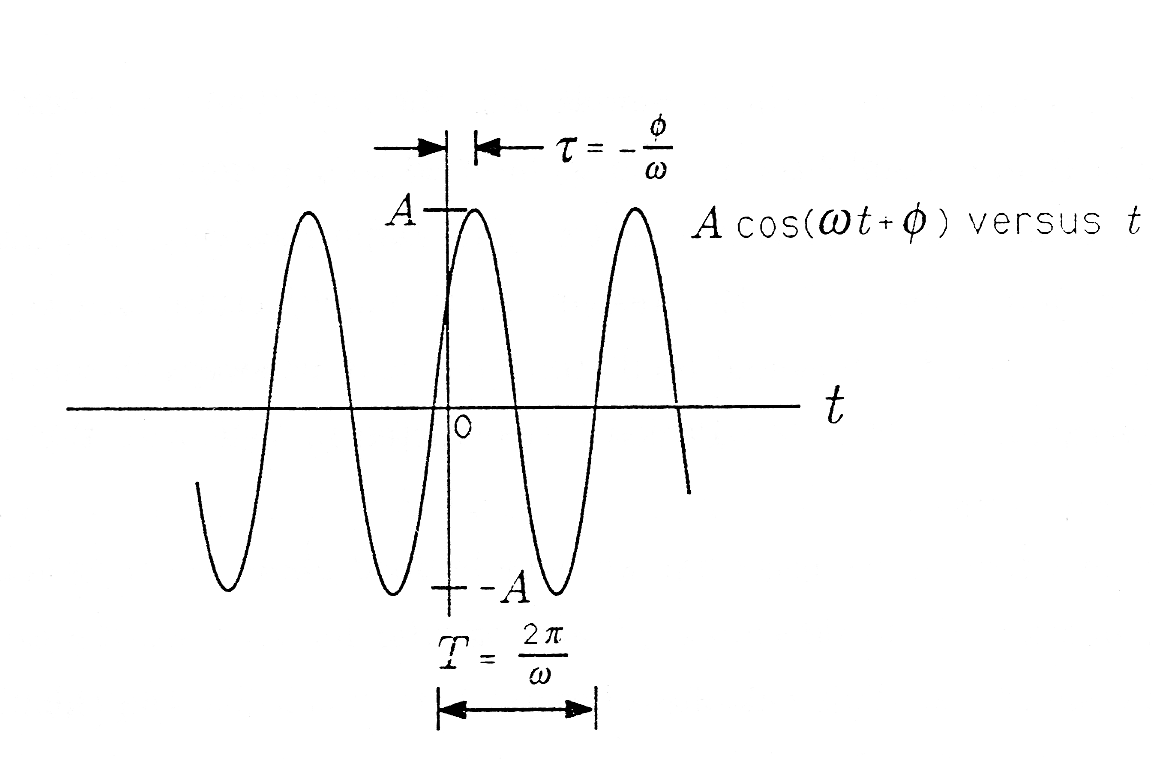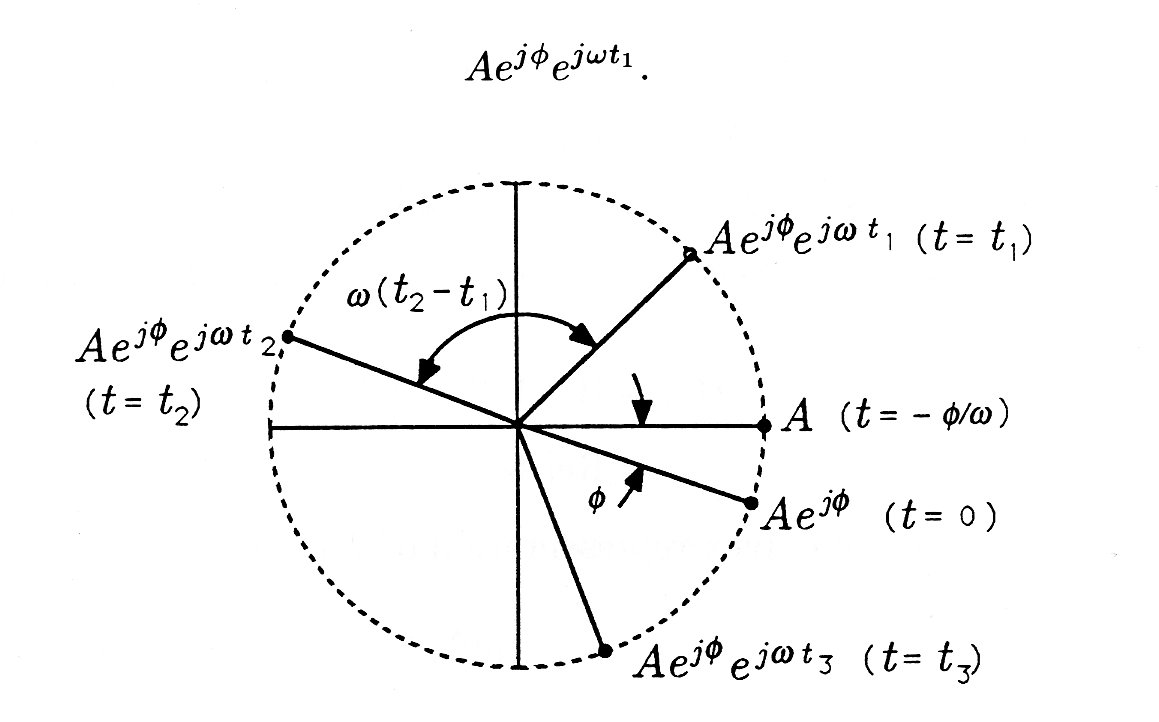| << Chapter < Page | Chapter >> Page > |
There are two key ideas behind the phasor representation of a signal:
Let's be concrete. The signal
illustrated in [link] , is a cosinusoidal signal with amplitude A , frequency ω , and phase φ . The amplitude A characterizes the peak-to-peak swing of , the angular frequency ω characterizes the period between negative- to-positive zero crossings (or positive peaks or negative peaks), and the phase φ characterizes the time when the signal reaches its first peak. With τ so defined, the signal may also be written as

When τ is positive, then τ is a “time delay” that describes the time (greater than zero) when the first peak is achieved. When τ is negative, then τ is a “time advance” that describes the time (less than zero) when the last peakwas achieved. With the substitution we obtain a third way of writing :
In this form the signal is easy to plot. Simply draw a cosinusoidal wave with amplitude A and period T ; then strike the origin so that the signal reaches its peak at τ . In summary, the parameters that determine a cosinusoidal signal have the following units:
A , arbitrary (e.g., volts or meters/sec, depending upon the application)
ω , in radians/sec (rad/sec)
T , in seconds (sec)
φ , in radians (rad)
τ , in seconds (sec)
The signal can be represented as the real part of a complex number:
We call the complex representation of and write
meaning that the signal may be reconstructed by taking the real part of . In this representation, we call the phasor or complex amplitude representation of and write
meaning that the signal may be reconstructed from by multiplying with and taking the real part. In communication theory, we call the baseband representation of the signal .
Geometric Interpretation. Let's call
the complex representation of the real signal . At , the complex representation produces the phasor
This phasor is illustrated in [link] . In the figure, φ is approximately If we let increase to time , then the complex representation produces the phasor

We know from our study of complex numbers that just rotates the phasor through an angle of ! See [link] . Therefore, as we run t from 0, indefinitely, we rotate the phasor indefinitely, turning out the circular trajectory of [link] . When then . Therefore, every seconds, the phasor revisits any given position on the circle of radius A . We sometimes call a rotating phasor whose rotation rate is the frequency :

Notification Switch
Would you like to follow the 'A first course in electrical and computer engineering' conversation and receive update notifications?